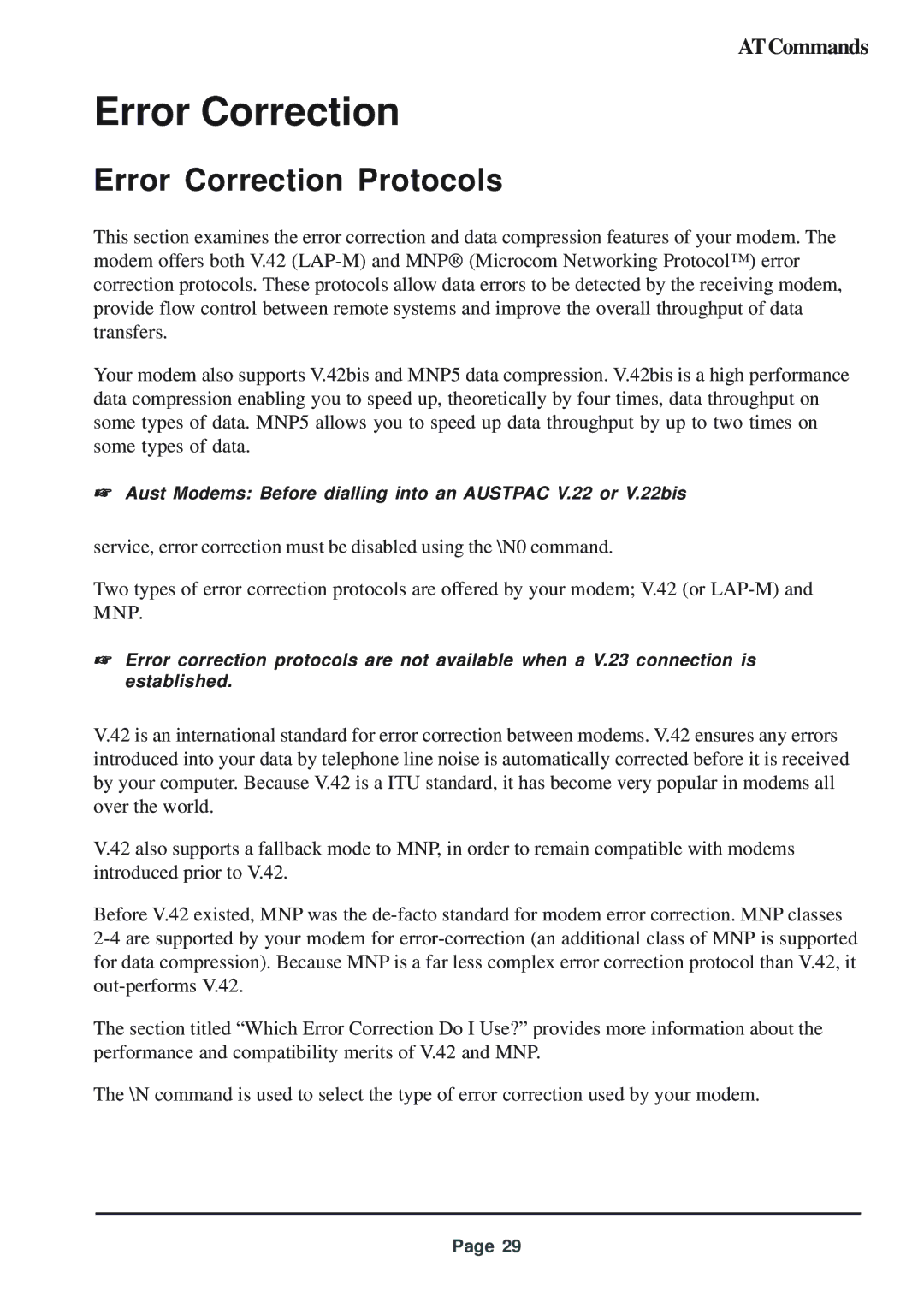ATCommands
Error Correction
Error Correction Protocols
This section examines the error correction and data compression features of your modem. The modem offers both V.42
Your modem also supports V.42bis and MNP5 data compression. V.42bis is a high performance data compression enabling you to speed up, theoretically by four times, data throughput on some types of data. MNP5 allows you to speed up data throughput by up to two times on some types of data.
☞Aust Modems: Before dialling into an AUSTPAC V.22 or V.22bis
service, error correction must be disabled using the \N0 command.
Two types of error correction protocols are offered by your modem; V.42 (or
☞Error correction protocols are not available when a V.23 connection is established.
V.42 is an international standard for error correction between modems. V.42 ensures any errors introduced into your data by telephone line noise is automatically corrected before it is received by your computer. Because V.42 is a ITU standard, it has become very popular in modems all over the world.
V.42 also supports a fallback mode to MNP, in order to remain compatible with modems introduced prior to V.42.
Before V.42 existed, MNP was the
The section titled “Which Error Correction Do I Use?” provides more information about the performance and compatibility merits of V.42 and MNP.
The \N command is used to select the type of error correction used by your modem.
Page 29
